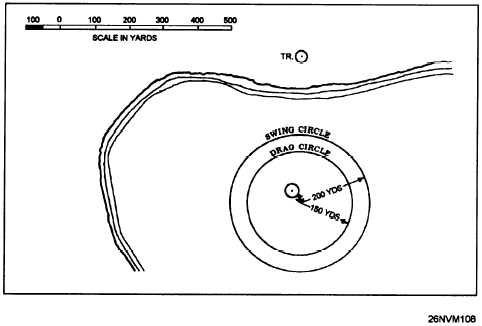| |
Precision Anchoring, Continued
Post Anchoring
After the final position of the anchor has been determined, the navigator
Procedure,
then draws a second swing circle. This time the navigator uses the
continued
computed position of the anchor as the center, and the sum of the ship’s
length plus the actual scope of chain let out as the radius. If any
previously undetermined obstruction, such as a fishnet buoy or the swing
circle of another ship anchored nearby, is found to lie within this circle,
the ship may have to weigh anchor and move away from the hazard. If
the ship is anchored in a designated anchorage area, due care should be
taken to avoid fouling the area of any adjacent berths, even though they
might presently be unoccupied. If the swing circle intersects another
berth, it may be necessary to take in some chain to decrease the swing
radius; if this is not possible, a move to a larger berth may be advisable.
If the navigator is satisfied that no danger lies within the swing circle,
he or she then draws the drag circle concentric with the swing circle,
using as a radius the sum of the hawsepipe to pelorus distance plus the
scope of chain. All fixes subsequently obtained should fall within the
drag circle; if they do not, the anchor should be considered to be
dragging. Both the swing circle and the drag circle are shown in figure
12-10, assuming that a scope of chain of 50 fathoms to the hawsepipe
has been let out.
Figure 12-10. Swing and drag circles.
12-19
|

